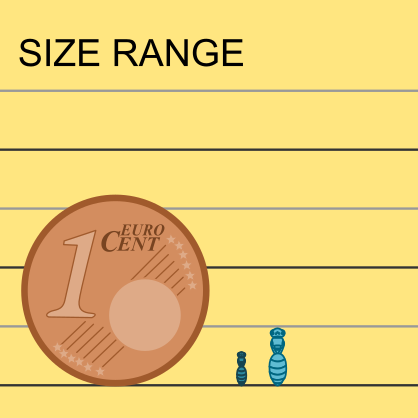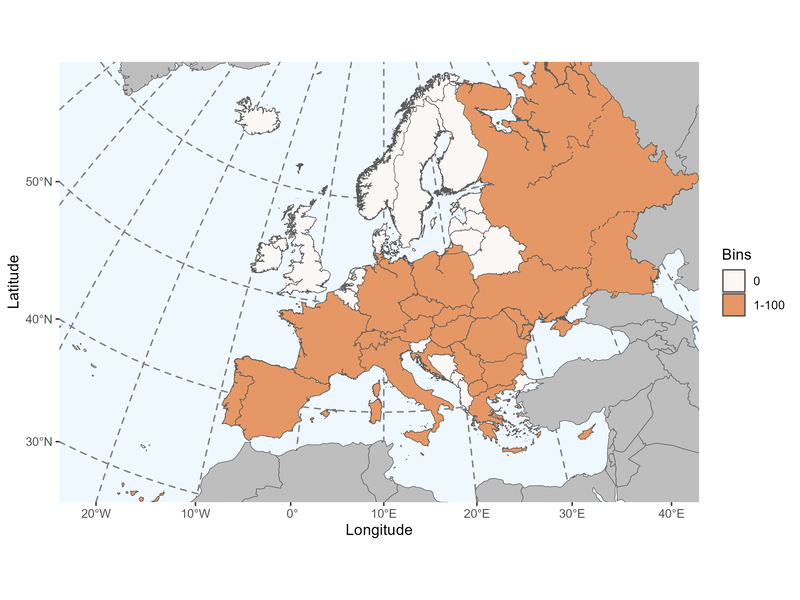Author: Schenck, 1867
|
Type species: Apis minutissima Rossi, 1790, designated by the Commission, Opinion 1319, 1985.
|
Clade: Anthophila
Family: Halictidae Subfamily: Halictinae Tribe: Nomioidini |
|
Distinctive traits
|
Pictures of distinctive traits.
(Sorry, there is no picture available at this time. If you have some and would like to become a contributor to IDmyBee, please contact us.) |
Morphologically close genera and how to distinguish them
Ceylalictus species have a black or brown T2 posterior margin masking the basal part of T3. Males have no apical process on their sternite 8.
Halictus & Lasioglossum species are much larger with a marginal cell pointed. Females have a furrow on T5.
- Nomioides - Ceylalictus
Ceylalictus species have a black or brown T2 posterior margin masking the basal part of T3. Males have no apical process on their sternite 8.
- Nomioides - Halictus & Lasioglossum
Halictus & Lasioglossum species are much larger with a marginal cell pointed. Females have a furrow on T5.
General comments on Nomioides species identification
Species identification criteria include face and abdomen colour patterns.
Species identification criteria include face and abdomen colour patterns.
Sorry, but the species identification tool is not yet available for Nomioides.
Please check the reference(s) below for traditional keys.
Please check the reference(s) below for traditional keys.
List of the 6 Nomioides species found in Europe (Ghisbain et al. 2023):
Nomioides (Nomioides) chalybeatus Blüthgen, 1934
Nomioides (Nomioides) deceptor Blüthgen, 1937
Nomioides (Nomioides) facilis (Smith, 1853)
Nomioides (Nomioides) fortunatus Blüthgen, 1937
Nomioides (Nomioides) minutissimus (Rossi, 1790)
Nomioides (Nomioides) pulverosus Handlirsch, 1888
Nomioides (Nomioides) chalybeatus Blüthgen, 1934
Nomioides (Nomioides) deceptor Blüthgen, 1937
Nomioides (Nomioides) facilis (Smith, 1853)
Nomioides (Nomioides) fortunatus Blüthgen, 1937
Nomioides (Nomioides) minutissimus (Rossi, 1790)
Nomioides (Nomioides) pulverosus Handlirsch, 1888
References with identification keys for some of the species:
- Amiet F., Müller A. & Neumeyer R.,1999. Apidae 2: Colletes, Dufourea, Hylaeus, Nomia, Nomioides, Rhophitoides, Rophites, Sphecodes, Systropha (Fauna Helvetica 4). Centre suisse de cartographie de la faune (CSCF), Neuchâtel, 239 pp.
- Pesenko, Y.A., Banaszak, J., Radchenko, V.G. & Cierzniak, T. 2000. Bees of the family Halictidae (excluding Sphecodes) of Poland. Bydgoszcz. 348pp.
Page contributors:
You noticed a mistake? You have a suggestion to improve this page?
Don't keep it to yourself, contact us and become a contributor to IDmyBee!
- Adrien Perrard (Dec. 2023)
- Adrien Perrard (Dec. 2019)
You noticed a mistake? You have a suggestion to improve this page?
Don't keep it to yourself, contact us and become a contributor to IDmyBee!
References used to write this page:
- Ghisbain, G., Rosa, P., Bogusch, P., Flaminio, S., Le Divelec, R., Dorchin, A., Kasparek, M., Kuhlmann, M., Litman, J., Mignot, M., Müller, A., Praz, C., Radchenko, V.G., Rasmont, P., Risch, S., Roberts, S.P.M., Smit, J., Wood, T.J., Michez, D. & Reverte, S. (2023). The new annotated checklist of the wild bees of Europe (Hymenoptera: Anthophila). Zootaxa, 5327(1), 1-147.
- Michener, C.D. 2007. The Bees of the World, 2nd Edition. The John Hopkins University Press, Baltimore.
- Michez D., Rasmont P., Terzo, M., Vereecken, N. 2019. Abeilles d'Europes. Hymenoptères d'Europes, Volume 1. N.A.P. Editions.
- Nieto, A., Roberts, S. P., Kemp, J., Rasmont, P., Kuhlmann, M., García Criado, M., ... & Michez, D. 2014. European red list of bees. Luxembourg: Publication Office of the European Union, 98.
- Rasmont, P., Devalez, Jelle, Pauly, A., Michez, D. & Radchenko, V.G. 2017. Addition to the checklist of IUCN European wild bees (Hymenoptera: Apoidea). Annales de la Société entomologique de France 53: 17-32.



